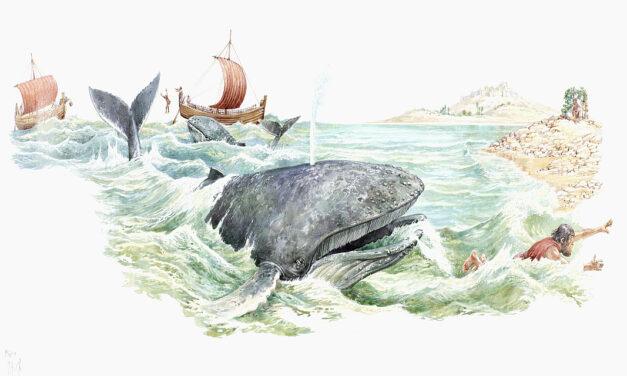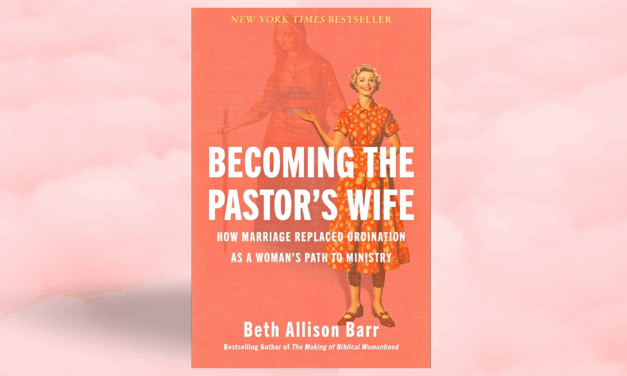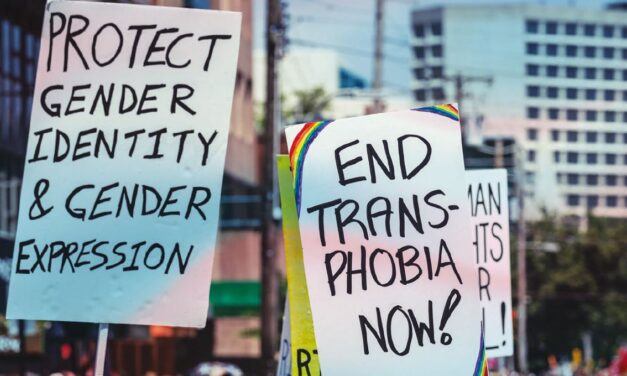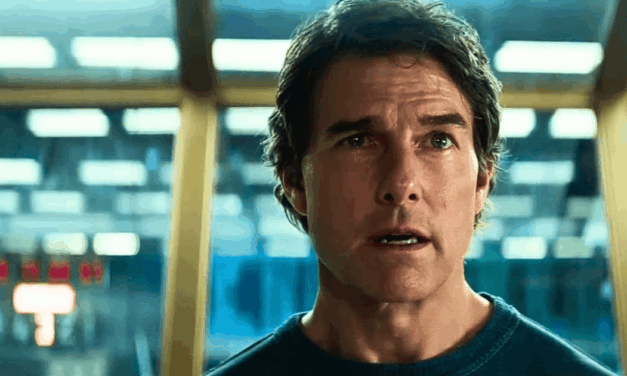This article first appeared in the News Watch column of the Christian Research Journal, volume 20, number 1 (January-March 1998). For more information about the Christian Research Journal, click here.
The January 1997 National Religious Broadcasters (NRB) Conference at the Anaheim Convention Center in Anaheim, California, attracted thousands of Christian radio and television talk show hosts, televangelists, and broadcasting advertisers from around the country. One of the most impressive and prominent displays at the gathering was that of the new San Francisco-based “Christian WYSIWYG Network,” named after the acronym for a type of computer screen resolution: What You See Is What You Get. According to literature distributed by WYSIWYG representatives, this “Christian” company serves as an umbrella corporation for eight new cable networks that promise to provide family entertainment and Christian programming:
- The WARM network is “designed exclusively for the valuable woman. WARM will provide today’s woman with unique insights into God’s love for her.”
- The WYSIWYG network, a family channel, will run “dramas, insightful documentaries, movies and live programming built on a foundation of Judeo-Christian values.”
- The ITTY BITTY network focuses on developing children with building blocks of discovery in God’s imaginative world.”
- The P.U.S.H. network is built on an acronym standing for “Pray until Something Happens .” This will be the “first twenty-four hour prayer network dedicated solely to the purpose of prayer!”
- The YES! network is “especially geared towards five to twelve year olds, where God’s awesome power can shine forth from kids!”
- The GOOD NEWS XTRA network airs “24 hour news!”
- The SPIT network targets teenagers with “radical music videos and slammin’ shows.”
- The YEARS network “provides a mature perspective, coupled with youthful vigor to create programming especially inviting to the silver set.”
Contrary to WYSIWYG’s name, however, NRB convention goers did not at all get what they were seeing. The founder and president of WYSIWYG, Richard Gazowsky, is an ordained minister of the United Pentecostal Church (UPC), the largest Oneness Pentecostal denomination in America. He is also senior pastor of the Voice of Pentecost Church in San Francisco, California, a Oneness Pentecostal church. According to the Dictionary of Pentecostal and Charismatic Movements, Oneness Pentecostals had been classified as heretical in 1915-1917, when they were expelled from the Assemblies of God for denying the Trinity doctrine. Current publications from various Oneness groups, including the UPC, indicate that Oneness adherents vehemently continue to reject the historic, orthodox view of the Godhead.
Rather than seeing God as a triune being, eternally existing as three distinct Persons (i.e., Father, Son, and Holy Spirit). Oneness Pentecostals maintain that God is a single Person who merely manifests Himself in three different roles. In other words, there is no ultimate distinction between the Father, Son, and Holy Spirit. As it says in an official UPC publication, “Jesus is the Father incarnate” (Meet the United Pentecostal Church International [Hazelwood, MO: Word Aflame Press, n.d.], 59; emphasis added). This doctrinal view, also known as Sabellianism or modalistic Monarchianism, was condemned as heretical back in the third century.
According to WYSIWYG spokesperson Doug Lanza, himself a Oneness Pentecostal, the idea to form new TV networks came to Gazowsky as he was praying near the end of a 40-day fast in April 1995. The allegedly divine origin of his idea was confirmed to Gazowsky two weeks later by a group of fellow Pentecostals who were on a walking pilgrimage through San Francisco. During their journey they paused in front of the Voice of Pentecost Church with a message for Gazowsky from God:
When they came to the church, they struck the ground seven times with a rod. Well, that’s exactly what happened when Richard was on this mountain praying. He had struck the ground seven times with his rod. And that was to signify the launching of seven television networks, [Note that eight networks were announced at NRB.] Now, these people — we didn’t know them, we’d never met them before in our life, other than one of the people that was the leader of the group, but the rest of them, we didn’t even know them. And Richard had not even opened his mouth and said anything to anybody….He took that as a confirmation that indeed God was in it…. So he announced to the church that he felt God was calling him to begin these seven television networks.
In a recorded telephone interview with the Journal, Lanza further revealed that Gazowsky’s main objective is to use his networks to break down denominational walls and bring together all Christians. “In our organization,” explained Lanza, “we work with everything from Presbyterians, to Baptists, to Pentecostals, to Assemblies of God, to Church of God in Christ. We have an interdenominational thing going on here.” To accomplish this ecumenical goal, WYSIWYG has been “working together with many other Christian ministries and churches and production companies.”
When asked to name a few of the more impressive ministries supporting WYSIWYG, Lanza mentioned Promise Keepers and Focus on the Family. He made special mention of WYSIWYG’s close link to Promise Keepers. These same organizations are listed in the January 1997 WYSIWYG programming schedule along with several other well-known Christian personalities, including D. James Kennedy, Greg Laurie, Charles Stanley, Beverly LaHaye, and Kay Arthur. The programming guide additionally lists several controversial figures within the charismatic/Pentecostal communities (e.g.. Jimmy Swaggart, John Hagee, Larry Lea, and Rodney Howard-Browne).
In reference to the aforementioned individuals, ministries, and organizations, Lanza told the Journal: “We are in direct contact with them and [they are] supportive of wanting to see us get off the ground.” Part of this support has been in the area of finances. Many people allegedly have contributed to WYSIWYG simply because so many well-respected ministries are backing the network. According to Lanza, funds for WYSIWYG have been secured through private donors contacted via Christian churches and ministries, as well as through exposure on other Christian networks and programs (e.g., Lester Sumrall’s LeSEA Broadcasting, Cornerstone Television, and Pat Robertson’s 700 Club). Assistance has also been provided to WYSIWYG from “top management people” at the Trinity Broadcasting Network (TBN), all of whom are said to be very supportive of the WYSIWYG project.
When the Journal pressed Doug Lanza on the issue of the Trinity, he gave assurances that WYSIWYG was not going to “push any one single doctrine.” When asked how Oneness Pentecostals at Gazowsky’s Voice of Pentecost Church might react to non-Oneness Bible teachers on WYSIWYG, Lanza replied that it would present no problem since the church has already hosted a number of mainstream charismatic/Pentecostal preachers: “We’ve had Larry Lea come through [the church]. We’ve had Lester Sumrall come through. We’ve had Mario Murillo come through. We’ve had Dick Bernal come through….We’ve had everything from a Catholic priest to a Jewish Rabbi who was filled with the Holy Spirit and was converted to Christianity come through.”
An altogether different picture emerged, however, when the Journal contacted several of the ministries supposedly committed to being on the WYSIWYG network. Brian St. Peters — spokesperson for Greg Laurie’s Harvest Christian Fellowship — stated that he remembers getting only one phone call from WYSIWYG. They represented themselves as a Christian network and offered to provide free air time to Laurie. Although St. Peters told them that it sounded like a good idea, he made no commitment to the network. Moreover, as of November 1997, he had not received any more phone calls from WYSIWYG. When told by the Journal of the group’s affiliation with Oneness Pentecostals, St. Peters stated that Laurie “wouldn’t be interested” in having any working relationship with such a network.
Like Harvest Christian Fellowship, D. James Kennedy’s Coral Ridge Ministries had only minor contact with Gazowsky’s organization. Walter Warren, head of programming for Coral Ridge, said he received some information from WYSIWYG in the mail, but that he never even responded to it. “I have never committed to going on their network,” Warren said. After learning from the Journal that Coral Ridge Ministries was listed in the WYSIWYG programming guide, Warren exclaimed, “That’s news to me.”
The Media Placement Director for Focus on the Family, Bob Dobbs, told the Journal that he, too, was contacted by WYSIWYG — once in April of 1996. Since then, however, he has heard nothing from them. Dobbs was especially surprised to see Focus on the Family listed in a weekly half-hour slot on the network’s schedule because the family-oriented ministry does not produce a weekly television program. Dobbs said that “Focus has no weekly commitment to any TV studio or network and has absolutely no plans to start a show of that kind.”
When the Journal told Promise Keepers spokesperson Steve Ruppe about WYSIWYG, its alleged connection to Promise Keepers, and the network’s programming schedule that lists Promise Keepers, Ruppe said that neither he nor anyone at the ministry’s headquarters had ever heard of WYSIWYG. “I would be very interested in finding out who they’ve been speaking to,” remarked Ruppe. “We do not even do regular TV programming.”
As of November 1997 the Journal could not reach a WYSIWYG representative for further comment. Consequently, the full story behind Gazowsky’s new television network remains a mystery. Ironically, during WYSIWYG’s only interview with the Journal, network spokesperson Lanza stated: “I’m willing to answer any questions because, you know, What You See Is What You Get, and there’s really nothing to hide.”
— Richard Abanes








